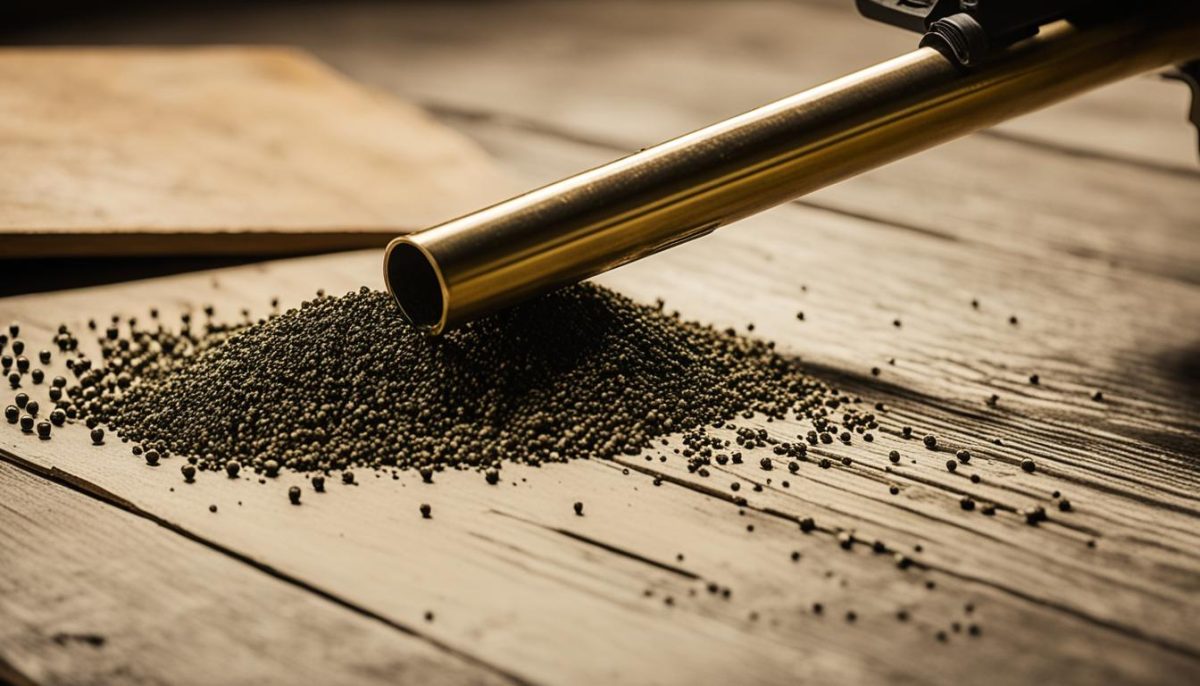In the captivating world of muzzle loading rifles, the selection of the perfect powder charge is a crucial step in ensuring optimal performance and safety. As we delve into this topic, we’ll explore the historical significance of these iconic firearms, the diverse types of muzzle loaders and their unique features, and provide you with the essential knowledge to make an informed decision on your powder charge. Whether you’re a seasoned enthusiast or new to the muzzle loading community, this guide will equip you with the tools and insights needed to achieve your desired results.
Understanding the Intricacies of Muzzle Loading Rifles
To fully appreciate the importance of powder charge selection, we’ll first explore the rich history and evolution of muzzle loading rifles. These firearms hold a significant place in the annals of military and hunting history, their design and functionality shaping the course of many pivotal events.
The Historical Significance of Muzzle Loaders
The history of muzzle loading rifles dates back centuries, with these firearms playing a crucial role in the exploration, expansion, and defense of nations around the world. From the early muskets used in the 17th century to the more advanced percussion cap rifles of the 19th century, muzzle loaders have been instrumental in shaping the course of human history.
Types of Muzzle Loading Rifles and Their Unique Features
Muzzle loading rifles encompass a diverse array of designs, each with its own unique features and characteristics. These include the classic flintlock, the more reliable percussion cap, and the versatile breech-loading muzzle loaders. Each type of muzzle loader has its own distinct advantages, whether it’s the time-honored accuracy of the flintlock or the lightning-fast ignition of the percussion cap.
Exploring the history and evolution of muzzle loading rifles provides a solid foundation for understanding the intricacies of powder charge selection. By delving into the design features and technological advancements of these firearms, we can better appreciate the crucial role that powder charge plays in their performance and reliability.
“The muzzle loading rifle was a game-changer in the hands of skilled marksmen, revolutionizing warfare and hunting alike.”
Muzzle Loading Rifles Powder Charge Selection: A Crucial Step
When it comes to muzzle loading rifles, the selection of the appropriate powder charge is a crucial step that can make all the difference in achieving optimal performance and ensuring safety. As we delve into the intricacies of this process, we’ll provide you with the knowledge and techniques necessary to make an informed decision that will enhance your shooting experience with these historical firearms.
The powder charge plays a vital role in the overall performance of a muzzle loading rifle. Selecting the right amount can unlock the full potential of your firearm, delivering accurate and consistent shots. Conversely, an improper powder charge can lead to suboptimal results or, in the worst-case scenario, compromise the safety of the shooter and those around them.
Factors to Consider When Selecting Powder Charge
Several factors come into play when determining the optimal powder charge for your muzzle loading rifle. Let’s explore some of the key considerations:
- Rifle Specifications: Understand the unique characteristics of your muzzle loading rifle, such as the barrel length, caliber, and manufacturer recommendations. These specifications can guide you in selecting the appropriate powder charge for your specific firearm.
- Bullet Weight and Velocity: The weight of the bullet and the desired muzzle velocity play a crucial role in determining the optimal powder charge. Heavier bullets typically require a larger powder charge to achieve the desired velocity.
- Environmental Conditions: Environmental factors, such as temperature, humidity, and altitude, can influence the powder’s burning rate and the overall performance of the muzzle loading rifle. Adjusting the powder charge accordingly can help maintain consistent and safe shooting conditions.
By considering these factors and experimenting with different powder charges, you can find the perfect balance that delivers the optimal performance and ensures the safety of your muzzle loading rifle.
| Powder Charge | Bullet Weight | Muzzle Velocity | Accuracy |
|---|---|---|---|
| 50 grains | 250 grains | 1,500 fps | Moderate |
| 60 grains | 300 grains | 1,650 fps | Good |
| 70 grains | 350 grains | 1,800 fps | Excellent |
Remember, the selection of the powder charge is a delicate balance between performance and safety. By understanding the factors involved and experimenting with different configurations, you’ll be able to unlock the full potential of your muzzle loading rifle and enjoy a safe and rewarding shooting experience.
“The powder charge is the heart of the muzzle loading rifle’s performance. Get it right, and you’ll be rewarded with outstanding results.”

Factors Influencing Powder Charge Selection
When it comes to muzzle loading rifles, selecting the optimal powder charge is a crucial step in ensuring peak performance and safety. As we delve into this topic, we’ll explore the key factors that influence this critical decision, providing you with a comprehensive framework to guide your choices.
Rifle Specifications and Manufacturer Recommendations
The starting point in determining the right powder charge is to thoroughly understand the specifications of your muzzle loading rifle. From the barrel length and bore diameter to the recommended powder types, we’ll carefully review the manufacturer’s guidelines to ensure you’re selecting the perfect charge for your firearm.
Environmental Conditions and Their Impact
Environmental factors can also play a significant role in the powder charge selection process. Factors such as temperature, humidity, and elevation can all impact the burn rate and performance of the powder, requiring adjustments to maintain optimal results. By considering these environmental variables, you’ll be able to fine-tune your powder charge for peak efficiency in any shooting condition.